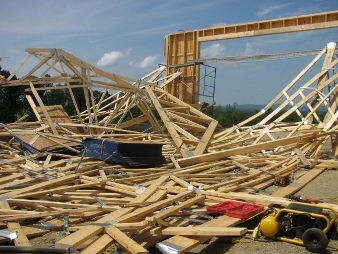The Cost of Savings
Savings is a seemingly simple concept that is easily understood by most adults and even children. However, in our desire to save money, we sometimes overlook the kind of “saving” that diminishes its value or eliminates it completely.

I grew up in a household behind the Iron Curtain, where two working parents with college education could barely make ends meet for most of my childhood and into my teen years. While the education that my parents had would enable them a place in the upper-middle-class in the US, the communist economic system of the Soviet Union made it all but impossible for people with an education and a white-collar job to make a decent living.
While we never starved, it was very clear to me since the early childhood that money was scarce and spending had to be done very carefully.
This lack of financial resources shaped my perception of money, and psychology of savings. I remember as a precocious 5 year old I encouraged my parents to save by suggesting we take less expensive means of transportation, or that we turn off the lights and being completely content with the inconvenience it would cause me. Such encouragement would usually end with my parents appreciating the offer and telling me that it was OK to pay for conveniences in these circumstances.
And when it came to the lights in the room, my dad would say that fixing my eyes would be more expensive than the cost of electricity.
The lesson I learned since those times is that savings has a cost. If we took a less expensive means of transportation the cost of savings is the longer time it takes to get to the destination. When the lights are off while I read the cost is the eye strain that can lead to worsening of the vision and costs and inconvenience associated with doctor visits, wearing glasses etc.
There are plenty of opportunities for savings around us, yet often we don't think about the real cost of these savings. When we buy a cheaper item instead of a more expensive item, certain aspects of the cost of savings are usually understood before the purchase is made. The cost of savings in this case can be recognized in the features, durability, quality and usability of an item purchased in comparison with a more expensive item. There may be additional cost of savings that appears later due to additional maintenance or repairs to the item because of the quality issues and other issues that would not happen with a more expensive item.
One of the interesting concepts in economy of savings is an opportunity cost, which is a benefit that a person could have received, but gave up, to take another course of action.
Here is a relevant example from construction business:
Owners of a property have decided to build their own home, acting as a General Contractor (GC) or Construction Manager (CM). The largest savings in the owners' opinion would be coming from the cost avoidance of hiring a construction professional, which could save a homeowner as much as 20% of construction costs. While there are real savings resulting from not paying the GC, the work that a GC would perform, still has to be done by someone.
Owners of the property running their own construction site quickly find out that it is a full time job and often for more than one person that requires constant focus on the day to day intricacies of construction process, managing the schedules of subcontractors, designers, suppliers, inspectors, payments and money management while making decisions and selections for the next item that construction process requires, usually performed under pressure due to escalating costs caused by delays and errors that are inevitably made by the inexperienced home owners.

The cost of opportunity in this case is the lost opportunity of the work (and/or play) home owners could be engaged in, while a construction professional is building their home. The enjoyment of stress-free building of your home by others has hiring a professional feel like a bargain in comparison.
In addition to lost opportunity cost, there will likely be other costs incurred due to actions by inexperienced home owners such as delays, quality issues and re-work.
Understanding the cost of savings and opportunity cost can save you even more in the future, so keep saving, but do it the smart way and be mindful of the potential cost of savings! And please reach out if you decide to invest your savings with us.


There are no published comments.
New comment